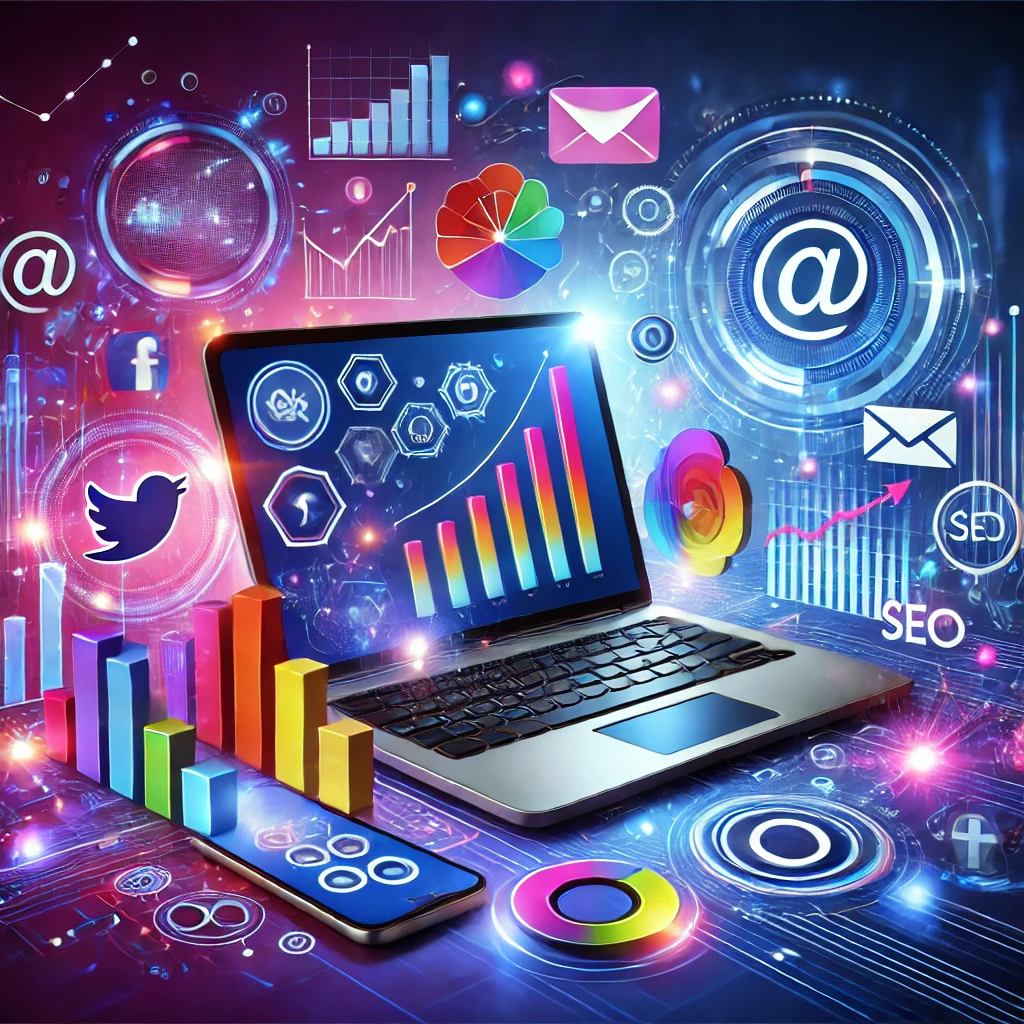Digital Marketing
Digital marketing refers to the use of digital channels and technologies to promote or market products and services to consumers and businesses. It encompasses all online marketing efforts that use an electronic device or the internet. Businesses leverage digital channels such as search engines, social media, email, websites, and other digital platforms to connect with current and prospective customers.
Key Components of Digital Marketing:
1. Search Engine Optimization (SEO):
– SEO is the process of optimizing a website to rank higher in search engine results pages (SERPs) and increase organic (free) traffic. It involves both on-page SEO (e.g., keyword usage, meta tags) and off-page SEO (e.g., backlinks, social signals).
2. Content Marketing:
– Content marketing focuses on creating valuable, relevant content to attract and engage an audience. Common forms include blog posts, videos, infographics, e books, and webinars.
![]()
3. Social Media Marketing:
– This involves promoting content, products, or services through platforms like Facebook, Instagram, Twitter, LinkedIn, and Tik Tok. Social media can be used for both organic promotion and paid advertising (such as Facebook Ads).
4. Pay-Per-Click Advertising (PPC):
PPC is a paid advertising model where advertisers pay a fee each time their ad is clicked. Google Ads is a popular platform for PPC, allowing businesses to bid for ad placement in search engine results pages.
5. Email Marketing:
Email marketing is the use of email to promote products or services. It’s a direct form of communication with prospects or customers, often used for newsletters, promotional offers, or nurturing leads.
6. Affiliate Marketing:
In affiliate marketing, companies pay commissions to third-party individuals or companies (affiliates) for driving sales or traffic through their referral links.
7. Influencer Marketing:
This involves collaborating with influencers (people with a strong following on social media) to promote products or services. Influencers help brands reach new audiences by recommending products to their followers.
8. Mobile Marketing:
– Mobile marketing is aimed at reaching audiences on their smartphones or tablets through SMS, in-app marketing, mobile-friendly websites, and apps.
9. Analytics & Data:
Digital marketers use various analytics tools (like Google Analytics) to track, measure, and optimize the performance of their digital campaigns. Data insights help in understanding user behavior and improving strategies.
10. Conversion Rate Optimization (CRO):
CRO focuses on improving the rate at which website visitors or users take desired actions, such as making a purchase, signing up for a newsletter, or filling out a form.
Benefits of Digital Marketing:
-Wider Reach:
Businesses can target audiences globally or locally based on their preferences and needs.
– Cost-Effective:
Compared to traditional advertising methods (TV, print), digital marketing can be more affordable and allows for better budget control.
Measurable Results:
Digital platforms provide metrics and analytics, making it easier to track the return on investment (ROI) and adjust strategies accordingly.
Targeted Advertising:

With advanced targeting options like demographics, location, and interests, businesses can reach specific segments of the audience most likely to convert.
Engagement and Interaction:
Digital platforms, especially social media, allow for real-time interaction between businesses and consumers.
Popular Digital Marketing Tools:
1. Google Analytics – for website traffic analysis.
2. Hootsuite or Buffer– for social media management.
3. Mailchimp – for email marketing.
4. Ahrefs or SEM Rush – for SEO research and competitor analysis.
5. Canva – for graphic design and content creation.
Digital marketing has become a critical part of modern business strategy, providing a wide range of tools and techniques to connect with customers more effectively and drive growth.




